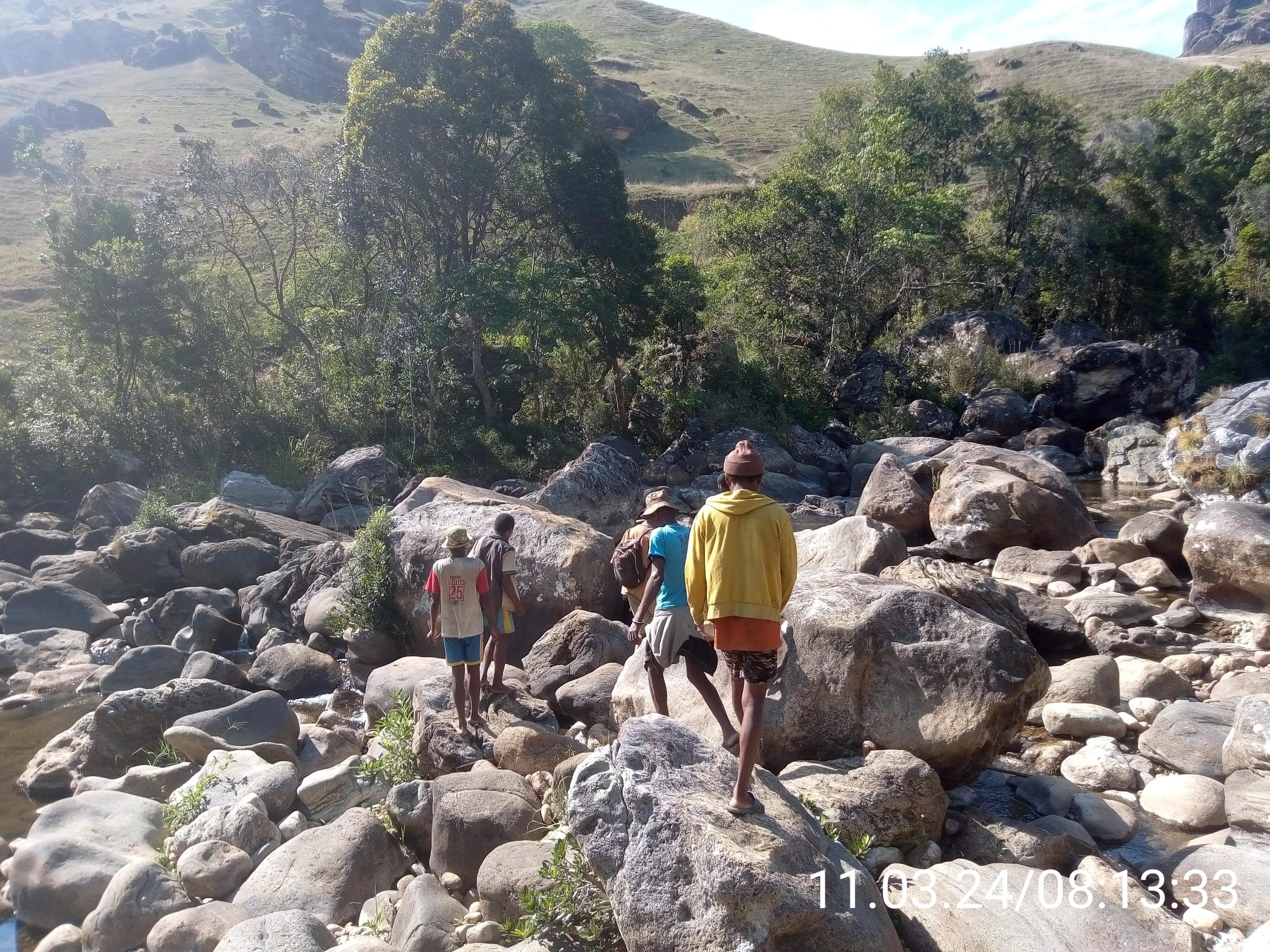
Befotaka Midongy
- Accueil
- National Park
- Befotaka Midongy
- Main ecological features:
Befotaka Midongy National Park features several types of ecological system representative of the Central Ecoregion and the Eastern Ecoregion. The formation is made up of dense evergreen rainforest at medium and low altitudes, rich in healthy biodiversity thanks to the region’s climatic conditions. In addition to these ecological systems, the Park is also home to rock forest and aquatic ecological systems including rivers, lakes, swamps and others.
Translated with DeepL.com (free version)
History
Befotaka Midongy National Park is part of the large forest estate classified in 1953 by the forestry administration of the time, with a total surface area of around 315,000 ha. The study for its creation and delimitation was carried out by the ORGASYS/CIRAD- FORET consortium in 1996 -1997. The region's forestry potential and socio-economic situation give it National Park status. It was created and classified as National Park N°9 in Madagascar by Decree N°97-1451 of December 18, 1997, with a surface area of 192,198 ha.
Management of the park was started in 2005 by Madagascar National Parks, then ANGAP. The project aims to conserve and sustainably manage the region's characteristic biodiversity, in close collaboration with local communities and as an economic incentive for development.

Fauna
56 espèces d’amphibiens, 53 espèces de reptiles, 104 d’espèces d’oiseaux; 8 espèces de lémuriens. De ce fate, le parc possède 14% de reptiles; 37% d’oiseau ; 08% de lémuriens de Madagascar.
Lémuriens diurnes : Eulemur collaris, , Hapalemur meridionalis (Halo), Avahi peyrierasi), Lepilemur sp., Daubentonia madagascariensis,
Carnivores : Cryptoprocta ferox (Fosa), Galidia elegans (elegans)- Eupleres goudotii (goudoti)
Oiseaux : Anas melleri (EN) ou Akimainty) très chassé par les villageois, Anas erythrorhyncha (Menasogny, Menamolotra), Dendrocygna viduata (Tsiriry, Vivy), Lophotibis cristata (Akohoala), Numida meleagris (Akanga, Vitroala), Streptopelia picturata (Domohina, Dehoke).

Flora
Hernandia Vovronii (Hazomalany), plusieurs espèces de genre Dalbergia sp (Palissandre), plusieurs espèces aussi de Dyospiros sp (Hazomainty ou ébènes). Il y existe aussi d’essences classées 3 e, 4 e et 5 e catégories dans le classement forestier à plusieurs utilisations très variées. Beaucoup d’autres espèces végétales endémiques de Sud Est enrichissent cette formation forestière notamment les palmiers, plantes médicinales, plantes aromatiques, lianes, orchidées rares ou du genre courant, et autres épiphytes typiques de ce genre de formation.
Illegal encampments
Clearing and grazing fires
Logging
Poaching
Mining
Biodiversity conservation
A number of initiatives have been planned to address the environmental challenges and human pressures on the park.
Conservation, Support and Development
Reinforcement of monitoring and controls in pressure zones
Restoration of degraded habitats
Ecological monitoring of conservation targets
Improvements to park visibility (external boundaries and information and prohibition signs)
SARINDRA
AGIRAP
Income support by setting up mixed patrols with villagers through CLPs (Local Park Communities)
Promoting development focused on climate change, food security and livelihoods
Creating jobs through temporary labor
Building irrigation dams
ONG Fiantso

To support and strengthen the sustainable management of protected areas in Madagascar, combining financing, technical expertise and support for local development.

Ensure sustainable financing and effective management of PAs by supporting biodiversity conservation while involving local communities

Fund Madagascar National Parks' five-year strategic plan to ensure the sustainable management of marine and terrestrial protected areas.
On the plan
VISIT US
Depending on your means of transport :
- Ground Transportation
- Car 4*4 off-Road: Vangaindrano-Midongy: One day in dry season and 02 days in rainy season
- Motocross: Vangaindrano-Midongy: One day in dry season and 02 days in rainy season
- Maritime transport
None
- Air transport
None
Ideal period
The RNT18 road from Vangaindrano to Befotaka is very bad, especially during the rainy season, so it's best to visit the park in the dry season.
Fees and charges
Download the reference document to find out more about park fees and charges.
Madagascar National Parks
Immerse yourself in the unique biodiversity of our national parks and discover our commitment to conservation and ecosystem protection. Marvel at unspoilt landscapes and exceptional wildlife. Together, we create a model of responsible and beneficial coexistence

